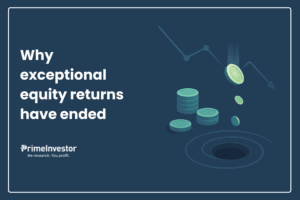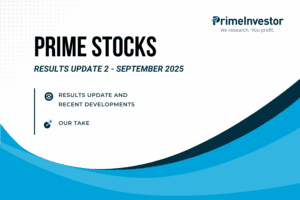It’s raining NFOs as much as IPOs! While most NFOs are fairly standard, a few do appear to offer something different. Among these is internet-index ETFs/fund-of-funds. Recently, Groww and Mirae launched passive ETF and Fund of Fund products that mirror the recently launched Nifty India Internet Index. Edelweiss had launched one last month on the BSE Internet Economy Index.

If you’re an investor who loves growth stocks, it can be very hard to stay off the shares of digital platform companies. Riding India’s booming online spends, these companies sell everything from insurance policies to used cars online, with considerable success. They also deliver a bunch of services to your home – whether it is picking up parcels, ordering from restaurants or getting your fridge cleaned – so that you can be a happy couch potato. This makes for strong topline growth in a large addressable market.
So, would taking the mutual fund route to own internet companies make sense? We answer this question here.
Risks with stock-picking
While internet stocks hold a lot of promise, they come with large doses of risk.
Their long growth runway attracts competitors with deep pockets. Their wafer-thin margins can be decimated by discount wars, and discounts are often the primary route to draw in customers. Their business models can be disrupted by regulation and activism. Their lack of accounting profits renders conventional valuation metrics unsuitable, making it harder to analyze.
One or more of these risks have played out in several companies already, such as Nykaa, One 97 Communications, or even Swiggy. Others such as PB Fintech and Eternal initially slipped and slowly recover later.
Picking a couple of individual stocks in this segment, therefore, can be highly risky and concentrated exposure to a few stocks can hurt your portfolio if the call goes wrong. That makes the mutual fund route a better way to own these themes. This apart, the mutual fund route also offers access to a wider range of these new-age companies.
Active route: Innovation and Digital India Funds
Internet and platform companies can be tricky businesses to navigate. We are yet to see good active funds centered around this theme, probably due to the limited listed universe of internet companies.
Several AMCs (ICICI Pru, SBI, Nippon, Tata, Bandhan) run thematic Innovation Funds (we reviewed them last month). They own a smattering of stocks such as Eternal (former Zomato), Info Edge and PB Fintech to justify their labels. But they also carry far heavier exposure to eternal AMC favourites such as private banks (HDFC, Axis, ICICI), traditional IT services (Infosys, TCS, Tech Mahindra), automobiles (M&M, Maruti) and industrials which dilute their ‘new-age’ flavour. These stocks are global economy or Indian-economy dependent and cyclical, characteristics that internet companies aren’t burdened with.
There’s another set of active thematic funds labelled as Technology and Digital India funds. But these funds are primarily IT-themed funds which are primarily cash-rich IT services giants (Infosys, TCS, HCL, Tech Mahindra etc), other IT plays, and hold only a smattering of the new-age internet companies.
The lack of a precise definition of labels such as “Innovation” and “Digital India” also gives these active managers room to play with other themes or stocks outside of internet companies. Therefore, these categories of active funds are unsuited to investors looking for a more focused holding in internet platform companies.
Passive route: Internet ETFs and FoFs
The recently launched passive funds mirroring internet-themed indices are the answer to investors wanting a dedicated exposure to internet companies. ETFs/Index funds proxy two key indices: Nifty India Internet Index and BSE Internet Economy Index. Here’s how the indices are constructed.
- BSE India Internet Economy Index: This index measures the performance of companies “that are seen to mostly operate by leveraging digital platforms and whose operations significantly depend on the internet”. Stocks are selected from the BSE 500 index. The top 20 companies which fit the description, based on their free float market capitalization, are included in the index. Individual stocks weights are capped at 15%. The index is reconstituted every six months in June and December. This index has been available from October 2024.
- Nifty India Internet Index: This index tracks the performance of companies that conduct business largely through online platforms. It includes all companies that fit this description from the Nifty Total Market Index. Currently, the index comprises 21 stocks. Stock weights are based on free float market capitalization. Individual stock weights are capped at 20%. This index is reconstituted every six months but rebalanced every three months. This index has been available from February 2025.
The latest top holdings, sector composition and valuations of the two indices are given below.
Which is better?
Of the two, the Nifty India Internet Index seems the better option for investors seeking focused exposure to internet platform companies for 3 reasons.
- All versus Top 20: The Nifty India Internet Index aims to include all online platform companies without any portfolio limits, unlike the BSE index. Given that most online businesses operate in nascent and yet highly competitive industries, it is difficult to say which of them will ultimately succeed or fail. Thus, an index which features all such businesses rather than sticking to just the 20 top stocks by market cap, offers a better shot at capturing big winners. The marketcap weighting ensures that the better stocks in the universe receive higher weight.
- More focused: The BSE Internet Economy Index has a significant 22% weight in telecom companies, apart from consumer services and financial services. Telecom companies in India may hold growth potential, but they do not have the ability to benefit from the network effect, quick scalability or rapid growth that online platforms are capable of achieving. They are also subject to higher regulatory interventions. The Nifty Internet index offers a more focused exposure to high-growth online businesses. This explains its pricier valuation relative to the BSE Internet Economy Index.
- Higher position limits: Given that platform stocks are a “win-big-or-lose-it-all” proposition, it makes sense to own concentrated positions in the winners. The Nifty index’s 20% individual stock cap allows for larger exposure in the winners, lifting portfolio performance. Since the index is market cap-weighted, the stocks with higher concentration would also be the winners.
Final takeaways
Passive funds offer the better route to owning internet/platform companies, as they allow you to hold diverse companies across sectors, giving you a shot at owning a few winners. Their market-cap based weighting ensures that winning players gain more weight in the portfolio over time, while the failing ones lose weight.
If you want to take this bet in your portfolio, remember that internet businesses whether held individually or as a portfolio, are highly risky propositions and you need to limit your exposure to the theme:
- Most platform businesses are yet to report profits based on standard accounting principles.
- Markets are pricing these stocks for a long growth runway with a turnaround in profits, reflected in their three-digit valuation multiples
- These businesses are subject to regulatory and competitive disruption
- These indices are subject to high volatility. According to the BSE, as of May 31 2025, the BSE Internet Economy Index delivered a 5-year CAGR of 31.3% with annualised standard deviation of 20.6%. We couldn’t calculate rolling returns on this index, given the lack of back-data. Our calculations show that since launch in October 2021, the Nifty India Internet Index averaged a 1-year rolling return of 27%. But it delivered 90% in its best one-year period, lost 40% in its worst year and had a one-year standard deviation as high as 39%.
The other risks with passive options are the tracking error and ETF liquidity. With these ETFs/funds having only just launched, there is no record yet on how well they track the index. The Mirae Asset Nifty India Internet ETF and the Groww Nifty India Internet ETF & FoF have only just concluded their NFO period.
A higher error on already volatile indices can compound the risks. Based on ETF trends so far, thematic ETFs usually suffer from illiquidity and mispricing in the markets. Therefore, if you want to allocate a portion of your portfolio to this theme, we suggest you stagger such investments after observing liquidity trends.





4 thoughts on “Prime Review: Should you go for Internet Economy ETFs?”
Hi,
Between Groww Nifty India Internet ETF & the corresponding FoF, which one do you suggest & why? Also, for an entry point now do you recommend lumpsum or SIP mode?
Any difference(s) between Mirae Asset & Groww ETFs here?
FoF is easier to transact in. Both Mirae and Groww track identical indices. This is not a recommendation but either route should work.
Good article, Is it better to invest in Nifty India Internet FOF instead of the ETF to keep the liquidity & tracking error in check. Does the FOF also gets effected by the tracking error? Kindly advise.
Too early to tell on FoF. Yes FoF will be indirectly affected by tracking error.